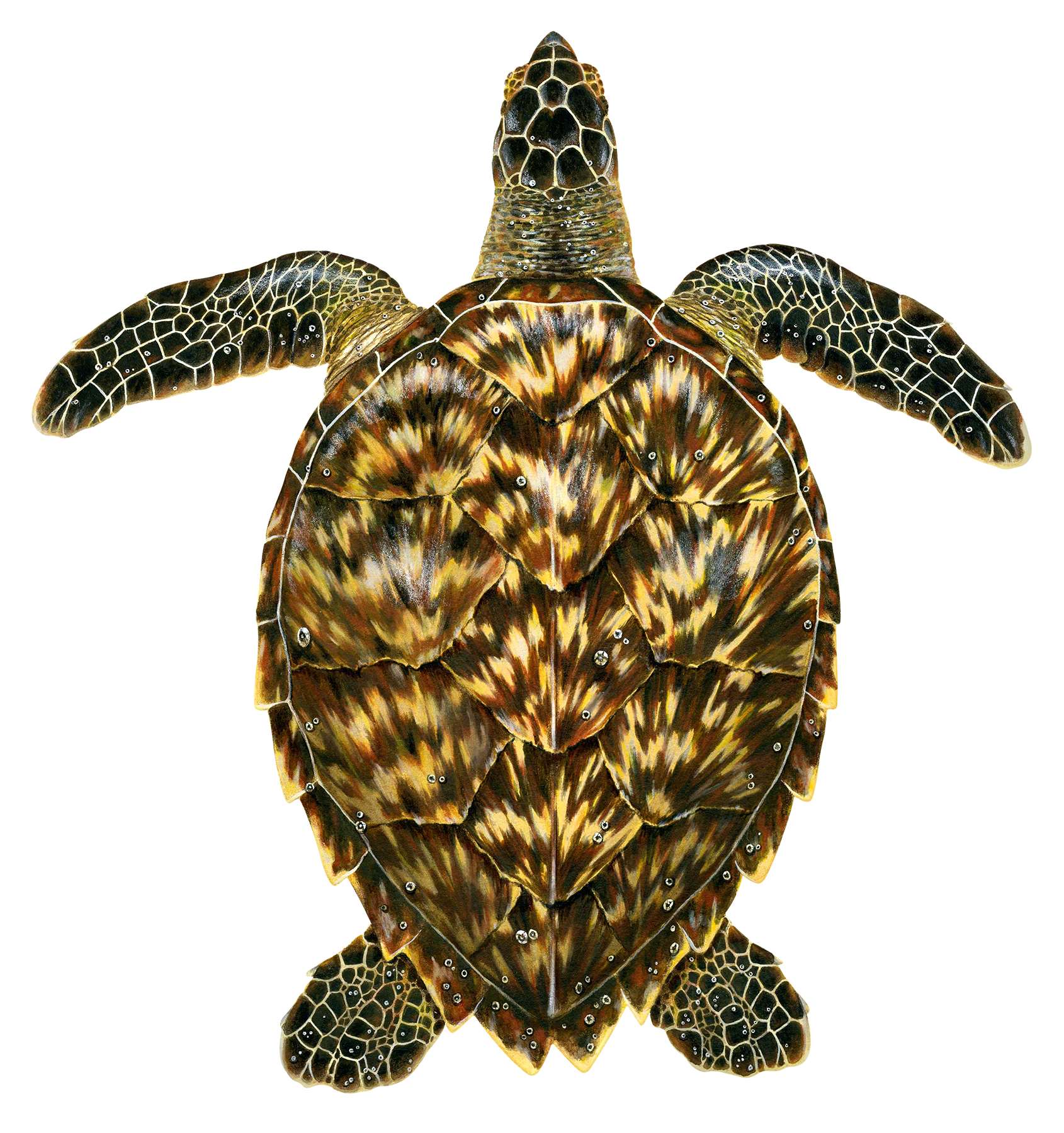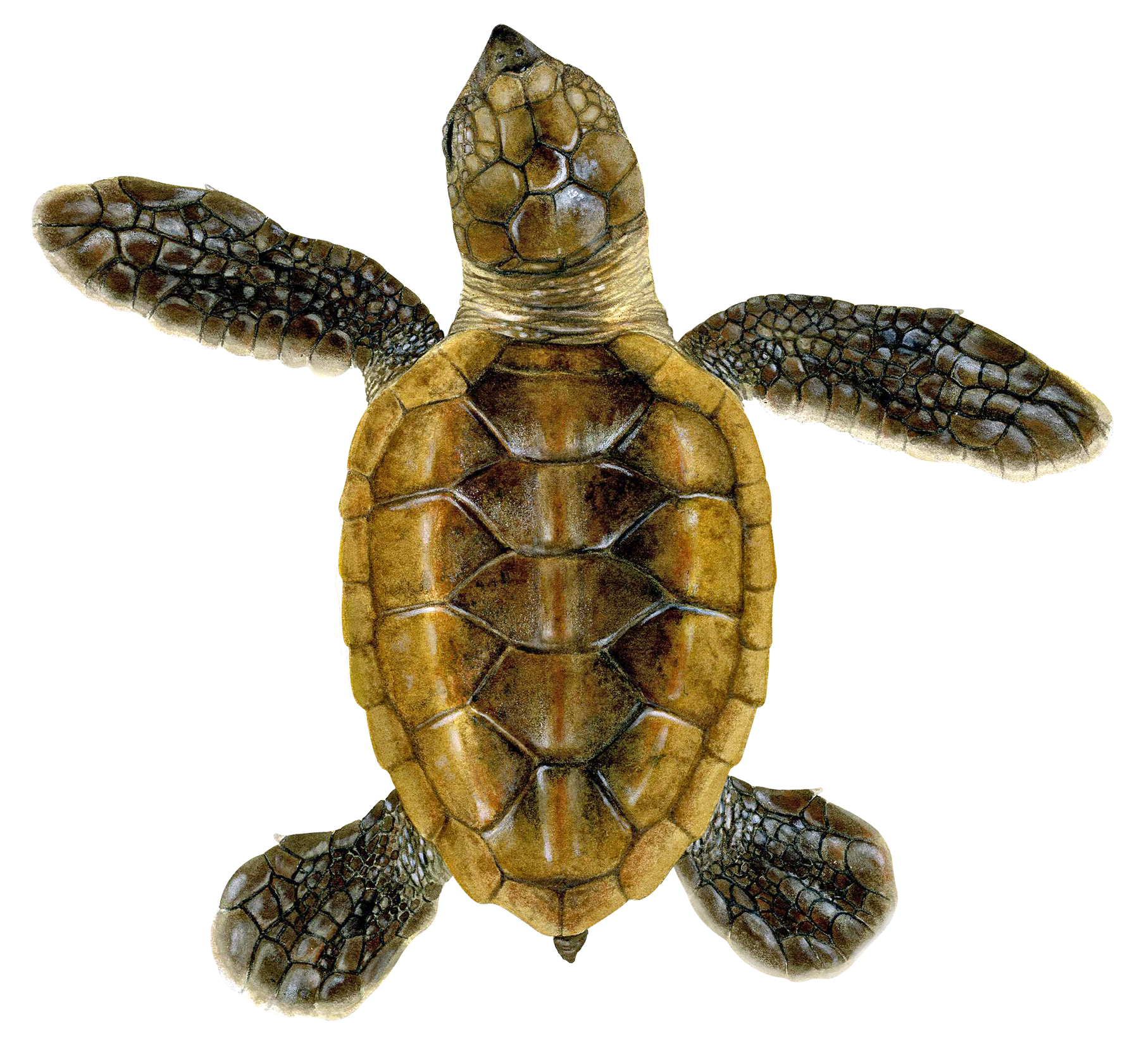Hawksbill Sea Turtle (Eretmochelys imbricata)
Often spotted near coral reefs, hawksbills are known for their exquisite shell pattern, featuring radiant streaks of orange and red. Targeted to fulfill demand for “tortoiseshell” trinkets, hawkbills are critically endangered worldwide. Bycatch also poses a threat to Hawksbills, but as Upwell Researcher Stephanie Rousso tells us, tracking rates of their incidental capture is extremely difficult.
Scientific Classification
Kingdom: Animalia
Phylum: Chordata
Class: Reptilia
Order: Testudines
Family: Cheloniidae
Life Cycle
Natural Lifespan: 105 - 135 years
Age at Sexual Maturity: 20 - 40 years
Average Clutch Size: 140 - 200 eggs
Average Clutches per Season: 3 - 5 clutches
Nest Incubation Period: 60 days
Remigration Interval: 2 - 3 years
Species Description
Adult Weight: 45 - 68 kgs (100 - 150 lbs)
Adult Size: 0.83 m (2.5 ft)
Appearance: Narrow head and beak, yellowish-brown coloration, carapace mottled with orange or red-tinted browns and overlapping scutes
Diet: Primarily sponges but also tunicates, mangrove shoots, algae and benthic invertebrates
Habitat
Photo by Daniel Ramirez
Geographic Range: Tropical and subtropical waters worldwide.
Marine Habitat Use: Mostly coastal waters, including rocky zones, coral reefs and mangrove estuaries.
Hawksbills spend most of their lives in waters 20 m (65 ft) deep or less. Hatchlings may venture into pelagic zones, seeking harbor in flotsam, or sometimes remain in mangrove estuaries, camouflaged among the fallen leaves. Juveniles and mature adults largely occupy coastal zones.
This species is most widely known as a coral reef dwelling species, particularly in the Caribbean. Hawksbills occupying coral reefs primarily feed on sponges, aided by the hooked beaks for which the species earned its name.
Conservation
Hawksbill conservation efforts are aided by the species listing in Appendix I and II of CITES, the Convention on International Trade of Endangered Species. Consistent with this listing, all international trade in Atlantic and Pacific hawksbills was outlawed in 1977. Enforcement lagged with over 45 countries continuing to engage in the trade of hawksbill shells. With concerted effort, Japan reduced imports from 37,700 turtles to 28,300 in the 1980s and 7,075 in the 1990s. Japan finally stopped acquiring Hawksbill shells all together and retrained hundreds of artisans who had depended on the illegal trade for income.
Other nations involved in the trade of hawksbill shells followed suit. Cuba decreased its official hawksbill fishery quota from 5,000 to 500 turtles. Illegal fishing continues to pose a threat to hawksbills globally, but in Cuba, as elsewhere, many local people now claim hawksbills are worth more alive as a source of income generation from a growing tourism industry.
Fun Fact
Hawksbills exhibit signs of biofluorescence on their shells, reflecting blue light back in fluorescent green and pink tones.




